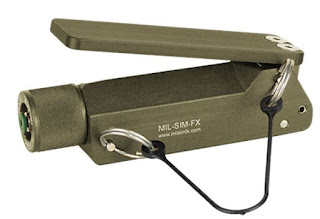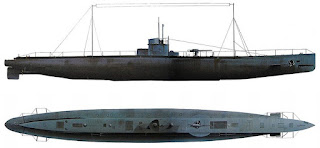Monitor (pronounced mon-i-ter)
(1) A student appointed to assist in the conduct of a class or school, as to help take attendance or keep order (largely obsolete).
(2) A person appointed to supervise students, applicants, etc., taking an examination, chiefly to prevent cheating; proctor.
(3) A person who admonishes, especially with reference to conduct.
(4) Something that serves to remind or give warning.
(5) A device or arrangement for observing, detecting, or recording the operation of a machine or system, especially an automatic control system.
(6) An instrument for detecting dangerous gases, radiation, etc.
(7) A receiving apparatus used in a control room, especially to provide a steady check of the quality of an audio or video transmission.
(8) A similar apparatus placed in various parts of a studio so that an audience can watch a recorded portion of a show, the performer can see the various segments of a program, etc.
(9) Any such receiving apparatus used in a closed-circuit system, as in an operating room.
(10) The screen component of a computer, especially a free-standing screen.
(11) In early computing, a control program which handled the primitive file-loading, essentially a precursor to operating systems.
(12) A type of armored warship of very low freeboard, having one or more turrets and used for coastal defense (now obsolete).
(13) In architecture, a raised construction straddling the ridge of a roof and having windows or louvers for lighting or ventilating a building, as a factory or warehouse.
(14) An articulated mounting for a nozzle, usually mechanically operated, which permits a stream of water to be played in any desired direction, as in firefighting or hydraulic mining (also called giant).
(15) Any of various large predatory lizards of the genus Varanus and family Varanidae, of Africa, southern Asia, the East Indies, and Australia, fabled to give warning of the presence of crocodiles.
(16) To listen to or observe something.
(17) In Engineering, a tool holder, as for a lathe, shaped like a low turret, and capable of being revolved on a vertical pivot so as to bring the several tools successively into position.
1540-1550: From the Latin monitor (one who warns) from perfect passive participle monitus (warning) from the verb monēre (to remind, bring to (one's) recollection, tell (of); admonish, advise, warn, instruct, teach) from the primitive Indo-European moneie- (to make think of, remind), source also of the Sanskrit manayati (to honor, respect) and the Old Avestan manaiia- (making think), a suffixed (causative) form of the root men- (to think), source also of the Latin memini (I remember, I am mindful of) & mens (mind). The notion was "one who or that which warns of faults or informs of duties".
The first use in English was to describe a "senior pupil at a school charged with keeping order" (vaguely analogous with the block kapo in a concentration camp), from the Latin monitor (one who reminds, admonishes, or checks," also "an overseer, instructor, guide, teacher). The lizard picked up the name in 1826 because of the fable in which it was said to give warnings of Nile crocodiles. The squat, slow-moving ironclad warship was first used in 1862 during the US Civil War, the name chosen by the inventor, Swedish-born U.S. engineer John Ericsson (1803-1889), because it was meant to "admonish" (in the sense of the senior pupil at a school) the Confederate leaders in the U.S. Civil War.
Use in broadcasting dates from 1924 when it meant "a device to continuously check on the technical quality of a radio transmission signals" and it was borrowed in 1931 during the development of early television broadcasts to describe "a TV screen displaying the picture from a particular camera." It soon came to mean electronic screens of any type. The general sense of monitoring stuff emerged in 1944 to describe certain wartime intelligence operations. Interestingly, as early as 1918 the romantic poet John Keats (1795-1821) used it in the sense of "to guide".
Lindsay Lohan wearing court-mandated ankle monitor. Strangely, despite attaching around the ankle, these are more frequently called bracelets than anklets.
Chanel Ankle Bags, Spring 2007 collection (left) and companion boot (right).
In one of several examples of the Lohanic influence on fashion and design, in their Spring 2007 collection, Chanel included a range of ankle bags. Functional to the extent of affording the wearing a hands-free experience and storage for perhaps a lipstick, gloss and credit card (and the modern young spinster should seldom need more), the range was said quickly to "sell-out" although the concept hasn't been seen in subsequent collections so analysts of such things should make of that what they will. Chanel offered the same idea in a boot, a design actually borrowed from the military although they tended to be more commodious and, being often used by aircrew, easily accessible while in a seated position, the sealable flap on the outer calf, close to the knee.
The Monitors
Monitors were curious looking, relatively small warships which, while neither fast nor heavily armored, carried disproportionately large guns, sometimes a single barrel as large as eighteen inches (460mm). First used in the US Civil War, they saw service in several navies during both world wars and some were built by the US Navy as late as the 1960s to support costal operations in the Vietnam War. Essentially a floating gun platform, they could be used only in shallow waters and were thus restricted to river and coastal duties where they were used as shore bombardment vessels. Monitors have the distinction of firing heavier shells than other warships.
HMS Marshall Ney (1915-1957)
The Royal Navy has a sense of history and maintains in the service a great veneration for her most illustrious ships, names like Dreadnought, Victory & Vanguard often re-used on newer vessels to maintain the links with a history which dates back almost five-hundred years. One ship not often mentioned in the annals is HMS Marshal Ney, laid down in 1915 as the first of two monitors of her class. Designed to use 15 inch (380 mm) guns with mounts and turrets which became available when the Admiralty opted to reconfigure the battleships Renown and Repulse as battle cruisers, Marshal Ney and her sister ship Marshal Soult were named in recognition of historically unusual situation of the French being allies rather than enemies. Built with the same armor as earlier monitors which mounted 12 inch (300 mm) guns, the original plan had been also to use the same well-regarded and reliable engines but an unfortunate decision was taken to use some diesel engines which were otherwise unallocated. In short order, HMS Marshal Ney would come to be known as “the worst ship in the navy”.
The Vickers engines in the Marshal Soult, though underpowered, were reliable but those in her sister ship, built by the German company of MAN were a disaster, the problems thought a consequence of it being impossible in wartime to employ the German technicians experienced in servicing them or obtain the spare parts needed to fix them. On the rare occasions the engines successfully started, they rarely ran for long without something “blowing up” and the engineers reports make clear, this expression was literal rather than used in the figurative sense often heard in engine rooms, pieces of shrapnel flying around with disturbing frequency. Remarkably, there were only minor injuries. As a result, the navy removed the big gun and installed it on the better performing monitor HMS Terror though in one of the coincidences of war, one of its barrels was on HMS Repulse when she was sunk by the Japanese in 1941. The Admiralty re-armed the Marshal Ney, firstly with a single 9.2 inch (235 mm) gun and later, six with 6-inch (150 mm) bores but made no attempt to replace the engines, using the ship instead as a floating gun platform in the Channel, towed from port to port as required. Despite being “the worst ship in the navy”, HMS Marshal Ney had a longer life on the active register than many more storied warships. After the First World War, she became first a depot vessel and later an accommodation ship, renamed three times between 1922-1947, becoming successively Vivid, Drake and Alaunia II. She was decommissioned in 1957 and sold for scrap, something which many sailors believed she'd been from the day she was launched.























